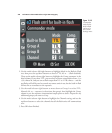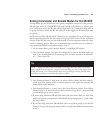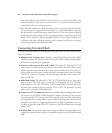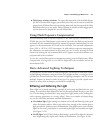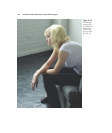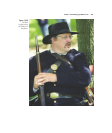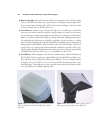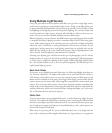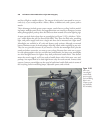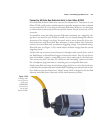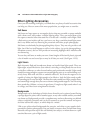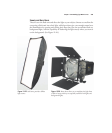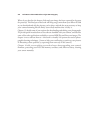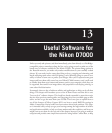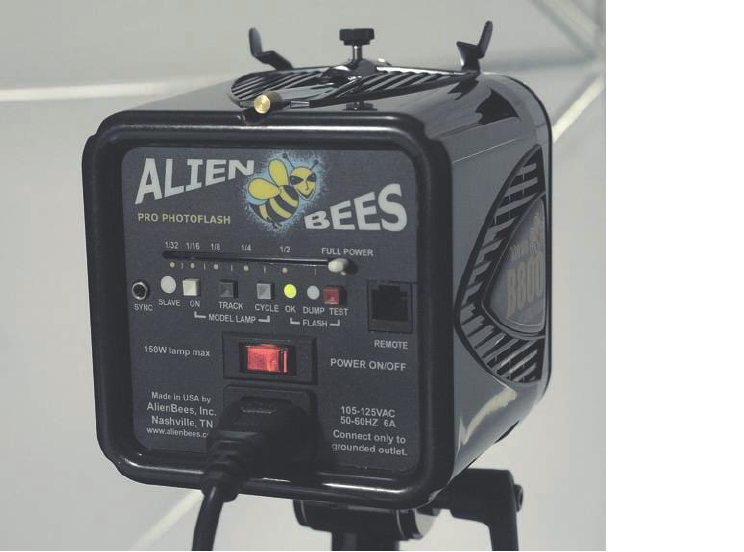
and lots of light to smaller subjects. The output of such units is measured in watt sec-
onds (ws), so you could purchase a 200ws, 400ws, or 800ws unit, and a power pack to
match.
Their advantages include greater power output, much faster recycling, built-in model-
ing lamps, multiple power levels, and ruggedness that can stand up to transport, because
many photographers pack up these kits and tote them around as location lighting rigs.
A more practical choice these days are monolights (see Figure 12.23), which are “all-in-
one” studio lights that sell for about $200-$400. They have the flash tube, modeling
light, and power supply built into a single unit that can be mounted on a light stand.
Monolights are available in AC-only and battery-pack versions, although an external
battery eliminates some of the advantages of having a flash with everything in one unit.
They are very portable, because all you need is a case for the monolight itself, plus the
stands and other accessories you want to carry along. Because these units are so popu-
lar with photographers who are not full-time professionals, the lower-cost monolights
are often designed more for lighter duty than professional studio flash. That doesn’t
mean they aren’t rugged; you’ll just need to handle them with a little more care, and,
perhaps, not expect them to be used eight hours a day for weeks on end. In most other
respects, however, monolights are the equal of traditional studio flash units in terms of
fast recycling, built-in modeling lamps, adjustable power, and so forth.
David Busch’s Nikon D7000 Guide to Digital SLR Photography436
Figure 12.23
All-in-one
“monolights”
contain flash,
power supply,
and a modeling
light in one
compact pack-
age (umbrella
not included).



